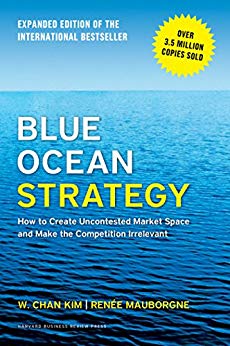

This article is an excerpt from the Shortform summary of "Blue Ocean Strategy" by W. Chan Kim and Renee Mauborgne. Shortform has the world's best summaries of books you should be reading.
Like this article? Sign up for a free trial here .
How do you execute a blue ocean strategy? What are the most common challenges you’re likely to encounter when putting your blue ocean strategy in motion?
Once you’ve got a strategy, it’s time to execute it. In Blue Ocean Strategy, Kim and Mauborgne oversee four potential hurdles that you’ll have to overcome to implement a blue ocean strategy at your company and offer advice on how to overcome them.
Let’s take a look at each one in turn.
1. The Recognition Shortfall
Before you can implement a blue ocean solution, you have to convince your stakeholders that there’s a problem worth solving. Arrange for them to meet dissatisfied customers, or otherwise bring them face to face with the problem, rather than relying on impersonal metrics.
(Shortform note: Make sure you’re personally familiar with the problem yourself too, so you can present your solution at a personal level, in a way that will serve your stakeholders’ best interests. According to Daniel Pink, this is one of the keys to effective selling.)
2. The Capital Shortfall
Kim and Mauborgne observe that companies in need of strategic change often have a resource shortfall. To work with this problem, the authors advise you to consider where your resources are earning the highest and lowest value per dollar spent, so that you can maximize your returns by shifting resources around.
(Shortform note: In The 48 Laws of Power, Robert Greene echoes this principle and generalizes it, saying that the key to moving forward is focusing on what will generate the greatest benefit. He applies this not only to physical resources but also to relationships and alliances.)
3. The Initiative Shortfall
Instilling in your team the motivation to make the change can be a hurdle in itself. In Blue Ocean Strategy, Kim and Mauborgne advise breaking down your strategy into small, actionable blocks so the change doesn’t seem so daunting.
(Shortform note: In Tiny Habits, Dr. BJ Fogg proposes that the key to changing a person’s behavior is designing a change that’s small enough they don’t need tremendous motivation to change.)
The authors also emphasize the importance of making your strategy implementation a fair process in order to rally your team behind it. If your team members feel listened to and respected in the decision-making process, they’ll more likely go along with a decision even if they personally disagree with it.
(Shortform note: In Never Split the Difference, Chris Ross and Tahl Raz observe that people will often go out of their way to oppose anything they see as unfair, even if it means making irrational choices. This is what you are trying to avoid: If people perceive your blue ocean strategy as an unfair change in the direction of the company, they may reject it despite its merits.)
4. The Cooperation Shortfall
Kim and Mauborgne observe that organizations often have internal battles to get things done. They advise having one person on your strategic management team who knows the corporate politics from firsthand experience. Her function is to help you anticipate who will side with you or against you, understand the opposition, and mobilize support.
(Shortform note: In The 48 Laws of Power, Robert Greene emphasizes that knowing your opponents’ secrets allows you to predict their behavior and ultimately control them. He suggests that if you engage with people in a friendly, interested manner, in a social setting, they will often reveal their interests, plans, and even weaknesses. If you are too well-known as a supporter of the coming changes, and you suspect that opponents of the changes won’t open up to you directly, you need someone on your team who can socialize for you to find out how people really feel.)
———End of Preview———

Like what you just read? Read the rest of the world's best summary of "Blue Ocean Strategy" at Shortform . Learn the book's critical concepts in 20 minutes or less .
Here's what you'll find in our full Blue Ocean Strategy summary :
- What blue oceans are, and how you create one for your business
- Why some businesses succeed in creating blue oceans, and why others fail
- The red ocean traps you have to avoid if you want business growth






